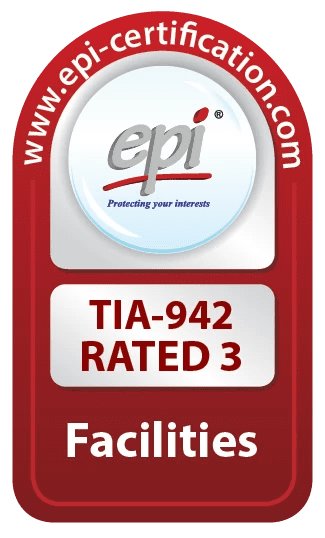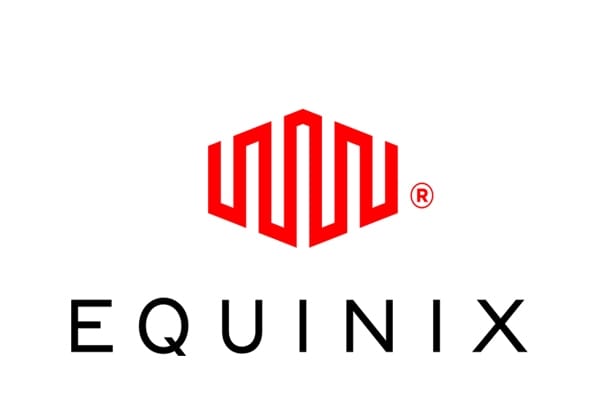Data Center Cabling – The Tale of Overhead VS. Underfloor

Overhead vs. Underfloor Cabling: Making the Best Choice for Your Data Center or On-Premise Computer Room in 2024 (4-minute read)

Pernama Persad – Author
Whether you’re setting up a data center or you’re an organization housing live IT equipment on your own premises, one crucial decision looms: how to organize your computer room cabling (an organization’s on-prem server room is what we shall call their computer room). Do you choose overhead or underfloor? It’s like deciding whether to store your socks in a drawer or hang them from the ceiling fan (well almost!). One popular data center standard certification body, the Uptime Institute (UI), doesn’t care much about where you run your cables and the other, the Telecommunications Industry Association (TIA), nudges you in a particular direction but doesn’t mandate which option to choose as we will see.
Here at Air Link Communications, we’ve had our fair share of heated discussions over this topic. Yes, we’re all still on speaking terms with each other, but some of us are now a bit sensitive about cable-related conversations. Choosing between overhead and underfloor cabling can significantly impact the efficiency, ease of maintenance, and safety of your operations. So, let’s dive in and help you make an informed decision. Bear in mind, this blog assumes your data center or organization’s computer room uses direct expansion cooling systems.
Overhead Cabling
Picture cables running along the ceiling of your data center like vines in a jungle canopy (except, in the case of the cables, how neatly they are run is totally up to you!). That’s overhead cabling. Here’s why it might be your choice:
- Easy Access: Your cables are easily reachable for maintenance and upgrades and one can easily see the entire cable layout at a glance for faster troubleshooting. No more crawling under floors; just a quick ladder climb.
- Better Airflow: Keeping cables above optimizes airflow, as they do not get in the way to obstruct the flow of cold air to your equipment from the underfloor cooling system. Proper cooling is absolutely essential as hot equipment is like a temperamental toddler—you don’t want it overheating.
- Flexibility: Overhead cabling allows for more layout changes. Rerouting cables is as easy as a hungry nomad feasting on a hot meal (or any meal for that matter!).
The cons of overhead cabling:
- Aesthetics: Some find the sight of hanging cables visually unappealing. If not managed properly and run with some structure in mind, your computer room might resemble a cabling technician’s version of a haunted house (but with cables instead of spider webs!).
- Accidental Disconnects: Ladders plus hanging cables equal potential disaster. Unstable ladders can snag cables, leading to accidental disconnects, falling persons, and the occasional bruised ego that goes with it.
- Gravity’s a Jerk: Gravity pulls down on hanging cables, and without proper support, these cables can slowly pull themselves free, causing power and connectivity issues. The use of twist-lock cables, when possible, can help with this problem.
Underfloor Cabling
Now, imagine cables tucked away beneath the floor like a secret underground lair. That’s underfloor cabling. Here’s why you might consider this sneaky option:
- Space Optimization: Underfloor cabling frees up floor space, allowing for more equipment (or a dance floor for those late-night troubleshooting sessions!).
- Safety: With cables hidden, there’s no cable related risk of tripping or accidental snagging as compared to overhead cabling.
- Aesthetics: No overhead cables, and the cable trays that house them, surely makes the above floor appearance much more easy on the eyes, especially if clients or other guests visit your data center’s computer room.
However, underfloor cabling may not be as pretty as rainbows and unicorns:
- Poor Accessibility: While cables are hidden, they’re also harder to access and underfloor work can quickly become a game of hide-n-seek as technicians must lift more floor panels than necessary to locate the area of contention.
- Bad Cable Management: Out of sight, out of mind. Without stringent cable management policies, underfloor cabling can become a tangled mess if cables are run at haphazard, turning future troubleshooting into a nightmare.
- Airflow Obstruction: Underfloor cabling can disrupt airflow if routed in such a way that they block the cold air that exits the air conditioning units, leading to inefficient cooling and the associated overheating of the computer room’s equipment (it’s like blocking the air vents in your car and wondering why you’re sweating).
- Inefficient Power Use: If the ‘Airflow Obstruction’ issue exists underfloor, your cooling units are working overtime, with their compressors running longer like a toddler on a sugar high. This means they guzzle more electricity in their quest to cool the space (and rack up more dollars on your power bill!) which also means, if your air conditioning equipment is powered by fossil fuel generated power, they will produce more carbon emissions and hence will contribute further to the Climate Crisis. And just like that toddler, if the compressors keep going at this rate, they’re bound to crash and burn out eventually.
Making the Choice:
So, how do you decide between overhead and underfloor cabling for your computer room? Consider these factors:
- Space and Layout: Evaluate your data center or organization’s computer room space. If floor space is limited, underfloor cabling might be the way to go. If you need easy access to cables or frequently reconfigure your setup, overhead cabling may be more practical.
- Cooling Requirements: Proper airflow is critical. Overhead cabling might be the sure way to minimize the obstruction of cold air flow under the floor, allowing for better air circulation. If cables can be laid out without blocking airflow, underfloor cabling could work.
- Safety and Maintenance: If you prioritize safety and want to minimize the risk of accidents, underfloor cabling might be the safer choice. However, if accessibility for ease of maintenance is a top priority, overhead cabling may be more suitable.
What do Data Center Industry Standard Certification Bodies say if I am a Data Center Seeking Certification?
The Uptime Institute doesn’t have a direct mandate relating to preference for either underfloor or overhead cabling in data centers. The Institute’s Tier certification system does not dictate operational requirements or pointed design considerations and hence these factors do not have an effect on either of the four Tier certifications that they offer. Instead, these cabling choices are left entirely up to the data center designers and operators.
The TIA’s ANSI/TIA-942-B-2017 standard, and it’s latest revision the ANSI/TIA-942-C, released in May of 2024, both recommends the use of overhead cabling, citing that overhead cabling may improve cooling efficiency and overhead cable trays minimize interference with underfloor cooling. But the standards still do not demand the implementation of overhead cabling (the specific details are explained in the standards). TIA’s delegated auditors will conduct a thorough analysis of the organization’s computer room setup and once the organization can provide evidence that the underfloor cabling layout they have employed does not hinder or obstruct the underfloor cooling system, then its implementation will not be considered a non-conformance issue and will not stand in the way of certification. So, the final choice is up to the data center designers and operators.
So, What Do We Do With the Socks?
After the smoke clears, you will realize that there is no correct, or wrong, choice between underfloor and overhead cabling. The choice itself will depend on your specific needs, preferences, the positioning of your cables with respect to the cooling system employed and the layout of your data center or organization’s computer room. Whichever option you choose, ensure proper planning and installation to optimize efficiency, safety, and performance in your computer room environment. And remember, when in doubt, don’t just hang your socks from the ceiling fan.





